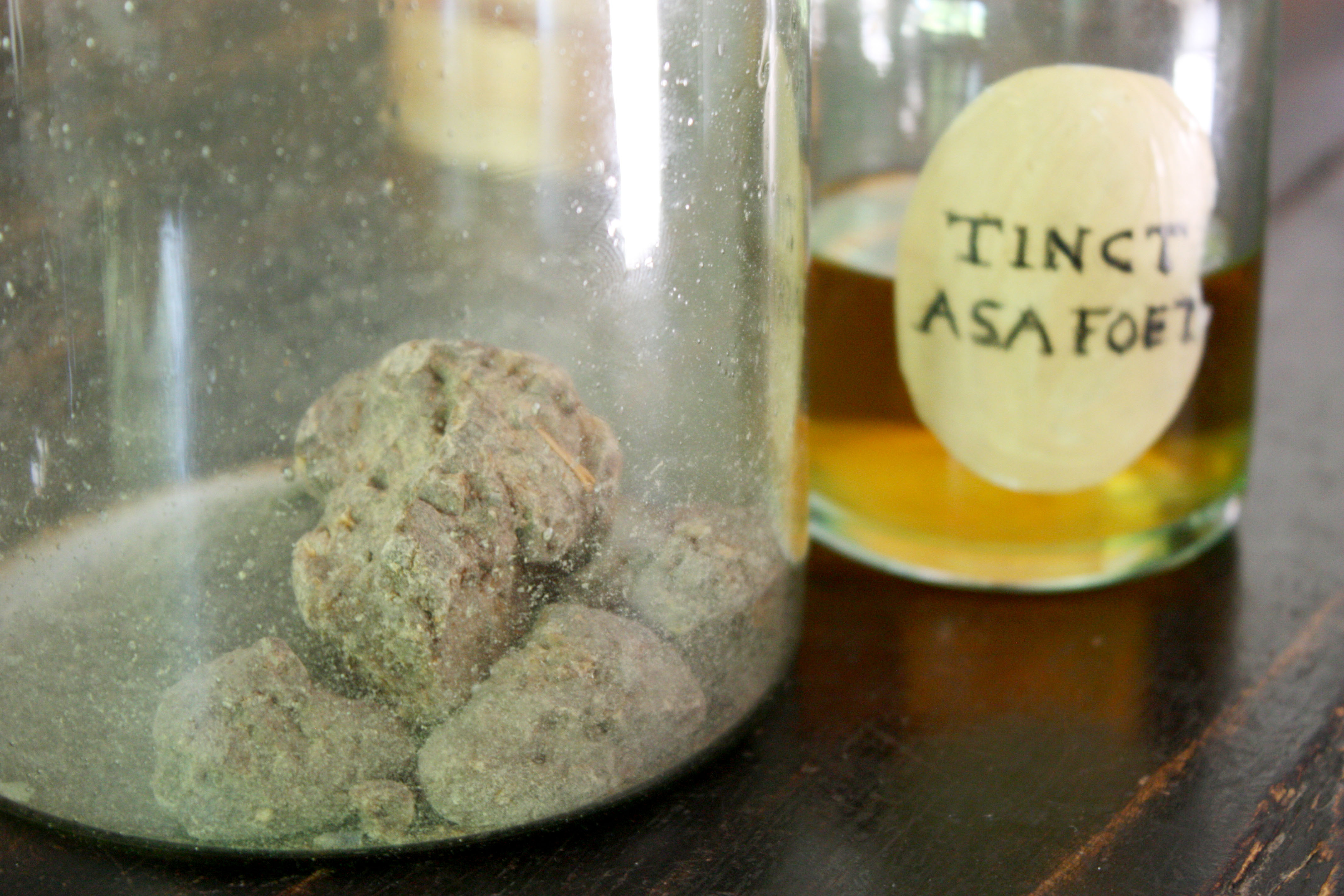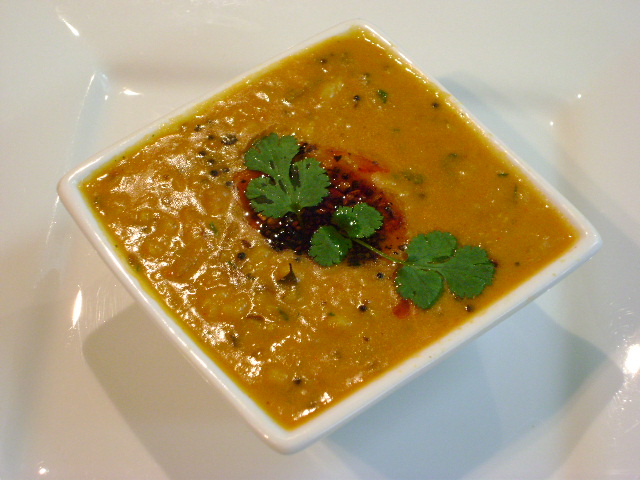|
Pohay
Poha/Pohe is an Indian breakfast and snack prepared in the cuisines of Indian states of Maharashtra, Odisha, West Bengal, Madhya Pradesh, Telangana, Karnataka, Kerala, TamilNadu, Gujarat, Goa and Rajasthan. Preparation Each Indian state has its own version of this tasty snack. In the state of Maharashtra this dish is typically called as 'Kande pohe' meaning Pohe with onions. To prepare this dish pohe ( flattened and processed rice) is first soaked and rinsed in water, then drained and cooked with onions, potatoes and roasted peanuts with a tadka of mustard seeds, hing, turmeric, cumin seeds, fresh green chilies, and kadipatta (or curry leaves). It is a popular snack that is also sold in local restaurants and food stalls. In home recipes people also add other vegetables such as peas and corn to it. Other simple variations in the Southern states include cooking it in sour buttermilk with only a tadka of green chillies, mustard seeds, urad dal, and kadipatta. In popular cu ... [...More Info...] [...Related Items...] OR: [Wikipedia] [Google] [Baidu] |
Maharashtrian Cuisine
Maharashtrian or Marathi cuisine is the cuisine of the Marathi people from the Indian state of Maharashtra. It has distinctive attributes, while sharing much with other Indian cuisines. Traditionally, Maharashtrians have considered their food to be more austere than others. Maharashtrian cuisine includes mild and spicy dishes. Wheat, rice, ''jowar'', ''bajri'', vegetables, lentils and fruit are dietary staples. Peanuts and cashews are often served with vegetables. Meat was traditionally used sparsely or only by the well off until recently, because of economic conditions and culture. The urban population in metropolitan cities of the state has been influenced by cuisine from other parts of India and abroad. For example, the South Indian dishes ''idli'' and ''dosa,'' as well as Chinese and Western dishes such as pizza, are quite popular in home cooking, and in restaurants. Distinctly Maharashtrian dishes include ''ukdiche modak'', , Kande pohe and Thalipeeth. Regular meals a ... [...More Info...] [...Related Items...] OR: [Wikipedia] [Google] [Baidu] |
Indian Fast Food
The fast food industry in India has evolved with the changing lifestyles of the young Indian population. The variety of gastronomic preferences across the regions, hereditary or acquired, has brought about different modules across the country. Many of the traditional dishes have been adapted to suit the emerging fast food outlets. The basic adaptation is to decrease the processing and serving time. For example, the typical meal which called for being served by an ever-alert attendant is now offered as a Mini-Meal across the counter. In its traditional version, a plate or a banana leaf was first laid down on the floor or table. Several helpers then waited on the diner, doling out different dishes and refilling as they got over in the plate. In the fast-food version, a plate already arranged with a variety of cooked vegetables and curries along with a fixed quantity of rice and Indian flatbreads is handed out across the counter against a prepaid coupon. The curries and breads vary ... [...More Info...] [...Related Items...] OR: [Wikipedia] [Google] [Baidu] |
Indori Poha
Indori Poha (Poha of Indore) is a type of flattened (beaten) rice that is likely to have originated in Indian metropolis of Indore. It contains steamed ''Poha'' (flattened rice) and is usually served with a unique combination of Jalebi (called Poha-Jalebi combined), Sev, Usal, sliced onions and fennel seeds. Unlike the other varieties of Poha found across India, Indori Poha is cooked in steam instead of being cooked directly with other ingredients. This provides Indori Poha its distinct taste, softness, and flavor. Vendors generally prefer pea instead of peanuts as opposed to the traditional Pohay of India. Indori Poha is generally served with Jalebi. History Indori Poha resembles its name from the city of Indore being its place of origin. It is believed that it was created after India's independence (1947). Recipe of Indori Poha though differs from vendors to vendors, generally it comes with a blend of North and Central Indian spices, snacks and namkeen. Indori Poha is main ... [...More Info...] [...Related Items...] OR: [Wikipedia] [Google] [Baidu] |
Curry Leaves
A curry is a dish with a sauce seasoned with spices, mainly associated with South Asian cuisine. In southern India, leaves from the curry tree may be included. There are many varieties of curry. The choice of spices for each dish in traditional cuisine depends on regional cultural tradition and personal preferences. Such dishes have names that refer to their ingredients, spicing, and cooking methods. Outside the Indian subcontinent, a curry is a dish from Southeast Asia which uses coconut milk or spice pastes, commonly eaten over rice. Curries may contain fish, meat, poultry, or shellfish, either alone or in combination with vegetables. Others are vegetarian. Dry curries are cooked using small amounts of liquid, which is allowed to evaporate, leaving the other ingredients coated with the spice mixture. Wet curries contain significant amounts of sauce or gravy based on broth, coconut cream or coconut milk, dairy cream or yogurt, or legume purée, sautéed crushed onion, o ... [...More Info...] [...Related Items...] OR: [Wikipedia] [Google] [Baidu] |
Buttermilk
Buttermilk is a fermented dairy drink. Traditionally, it was the liquid left behind after churning butter out of cultured cream. As most modern butter in western countries is not made with cultured cream but uncultured sweet cream, most modern buttermilk in western countries is cultured separately. It is common in warm climates where unrefrigerated milk sours quickly. Buttermilk can be drunk straight, and it can also be used in cooking. In making soda bread, the acid in buttermilk reacts with the raising agent, sodium bicarbonate, to produce carbon dioxide which acts as the leavening agent. Buttermilk is also used in marination, especially of chicken and pork. Traditional buttermilk Originally, buttermilk referred to the liquid left over from churning butter from cultured or fermented cream. Traditionally, before the advent of homogenization, the milk was left to sit for a period of time to allow the cream and milk to separate. During this time, naturally occurring lact ... [...More Info...] [...Related Items...] OR: [Wikipedia] [Google] [Baidu] |
Chili Pepper
Chili peppers (also chile, chile pepper, chilli pepper, or chilli), from Nahuatl '' chīlli'' (), are varieties of the berry-fruit of plants from the genus ''Capsicum'', which are members of the nightshade family Solanaceae, cultivated for their pungency. Chili peppers are widely used in many cuisines as a spice to add "heat" to dishes. Capsaicin and related compounds known as capsaicinoids are the substances giving chili peppers their intensity when ingested or applied topically. While ''chili peppers'' are (to varying degrees) pungent or "spicy", there are other varieties of capsicum such as bell peppers (UK: peppers) which generally provide additional sweetness and flavor to a meal rather than “heat.” Chili peppers are believed to have originated somewhere in Central or South America. and were first cultivated in Mexico. After the Columbian Exchange, many cultivars of chili pepper spread around the world, used for both food and traditional medicine. This led to a ... [...More Info...] [...Related Items...] OR: [Wikipedia] [Google] [Baidu] |
Cumin
Cumin ( or , or Article title ) (''Cuminum cyminum'') is a in the , native to the . Its seeds – each one contained within a fruit, which is dried – are used in the |
Asafoetida
Asafoetida (; also spelled asafetida) is the dried latex ( gum oleoresin) exuded from the rhizome or tap root of several species of ''Ferula'', perennial herbs growing tall. They are part of the celery family, Umbelliferae. Asafoetida is thought to be in the same genus as silphium, a North African plant now believed to be extinct, and was used as a cheaper substitute for that historically important herb from classical antiquity. The species are native to the deserts of Iran and mountains of Afghanistan where substantial amounts are grown. Asafoetida has a pungent smell, as reflected in its name, lending it the trivial name of "stinking gum". The odor dissipates upon cooking; in cooked dishes, it delivers a smooth flavour reminiscent of leeks or other onion relatives. Asafoetida is also known colloquially as "devil's dung" in English (and similar expressions in many other languages). Etymology and other names The English name is derived from ''asa'', a latinised form of Pers ... [...More Info...] [...Related Items...] OR: [Wikipedia] [Google] [Baidu] |
Brassica Nigra
''Brassica nigra'', or black mustard, is an annual plant cultivated for its dark-brown-to-black seeds, which are commonly used as a spice. It is native to tropical regions of North Africa, temperate regions of Europe, and parts of Asia. Description It is an upright plant, with large stalked leaves. They are covered with hairs or bristles at the base, but on the stem smoother. It can reach up to tall in moist fertile soil. It blooms in summer, from May (in the UK) onwards. The flowers have four yellow petals, which are twice as long as the sepals. Each stem has around four flowers at the top, forming a ring around the stem. Later, the plant forms long seed pods, that contain four rounded seeds. Taxonomy It was formally described by Karl Koch in "Deutschl. Fl." (or Deutschlands Flora) ed.3 on page 713 in 1833. This was based on a description by the Swedish botanist Carl Linnaeus. The Latin specific epithet ''nigra'' is derived from the Latin word for black. This is due to th ... [...More Info...] [...Related Items...] OR: [Wikipedia] [Google] [Baidu] |
Tempering (spices)
Tempering is a cooking technique used in India, Bangladeshi cuisine, Bangladesh, Nepali cuisine, Nepal, Cuisine of Pakistan, Pakistan and Cuisine of Sri Lanka, Sri Lanka, in which whole spices (and sometimes also other ingredients such as dried chillies, minced ginger root or sugar) are roasted briefly in oil or ghee to liberate essential oils from cells and thus enhance their flavours, before being poured, together with the oil, into a dish. Tempering is also practiced by dry-roasting whole spices in a pan before grinding the spices. Tempering is typically done at the beginning of cooking, before adding the other ingredients for a curry or similar dish, or it may be added to a dish at the end of cooking, just before serving (as with a dal, sambar (dish), sambar or stew). Ingredients used Ingredients typically used in tempering include cumin seeds, Brassica nigra, black mustard mustard seed, seeds, fennel seeds, ''Nigella sativa, kalonji'', fresh green Chili pepper, chilis, drie ... [...More Info...] [...Related Items...] OR: [Wikipedia] [Google] [Baidu] |
Flattened Rice
Flattened rice is a type of rice dish made from raw, toasted, or parboiled rice grains pounded into flat flakes. They are eaten as is, toasted, fried, or used as ingredients or toppings for other dishes. Depending on their use, they can be crispy, crunchy, chewy, or soft in texture with a light nutty flavor. They are traditional to many rice-cultivating cultures in Southeast Asia and South Asia. It is also known variously as rice flakes, beaten rice, pounded rice, pressed rice or chipped rice. South Asia Flattened rice is a breakfast staple in South Asia where it is known as ''poha'', ''pauwa'', ''avalakki'', ''chivda'', or ''aval'' among many other names. It is particularly popular in India, Nepal, and Bangladesh. ''Poha'' is made by de-husking rice grains and then parboiling or soaking them in hot water for 45 minutes. They are then dried, roasted, and then flattened with rollers. They usually come in thin, medium, and thick varieties. Thinner varieties are ideal for cooking and ... [...More Info...] [...Related Items...] OR: [Wikipedia] [Google] [Baidu] |







